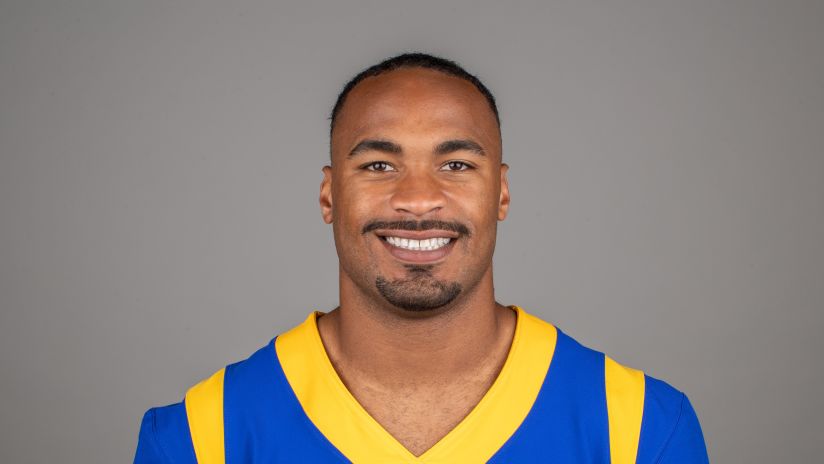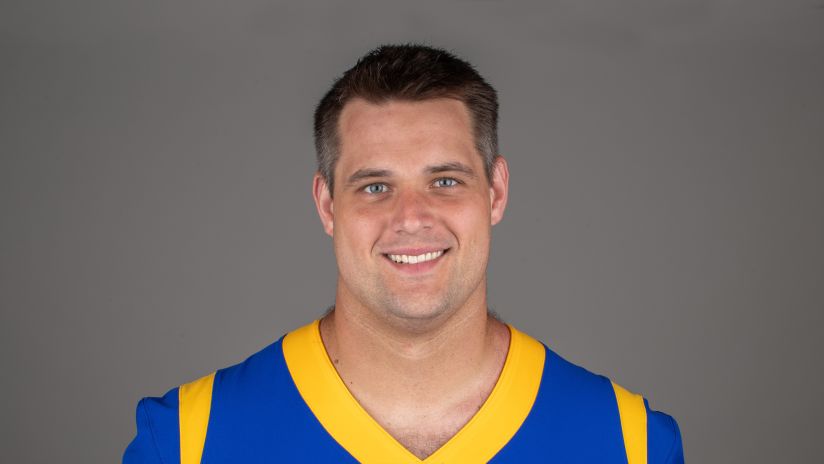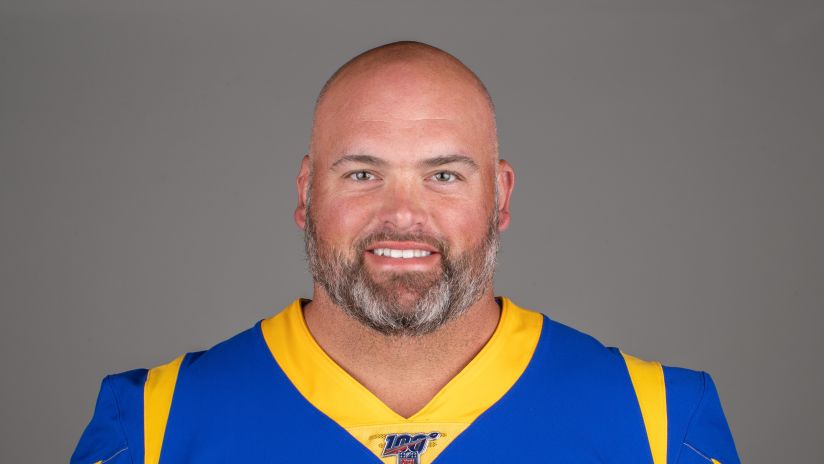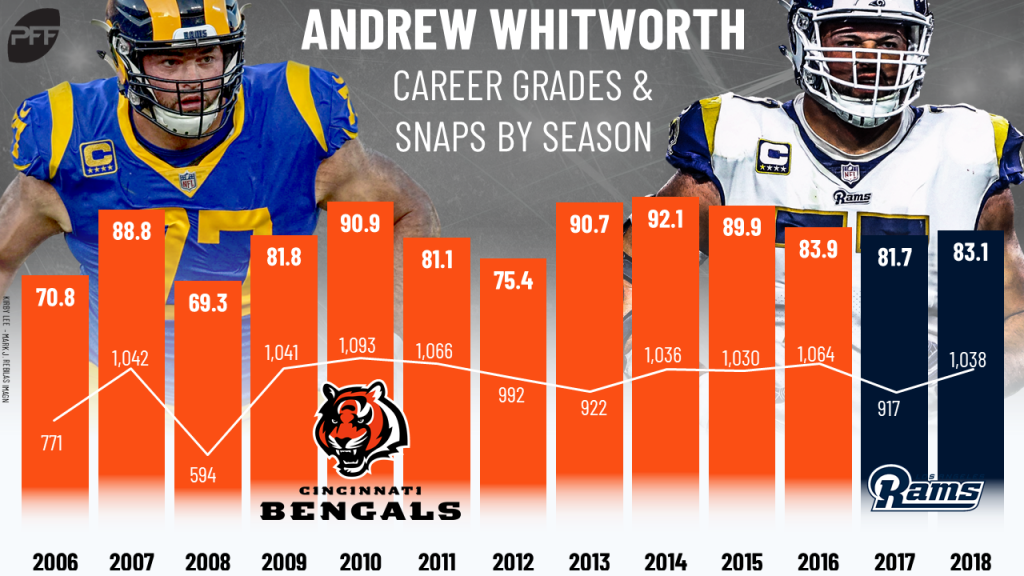https://www.espn.com/nfl/story/_/id/27103713/2021-nfl-cba-negotiations-nine-biggest-looming-issues
2021 NFL CBA negotiations: The nine biggest looming issues
The important thing to know about the current state of collective bargaining talks between the NFL and its players union is that the sides are, in fact, talking. This is a big deal because if you go back 10 years to the tail end of the previous CBA, they weren't. The owners had decided to opt out of the deal and lock out the players after 2010 in an effort to swing the revenue split back in their favor. They did just that.
This time around, with two full seasons left to play before the CBA ends, the
two sides have already begun talking and are
scheduled to ramp up talks this summer. There's even some motivation to get the new deal done before the 2019 season starts, which would head off any chance of an ugly work stoppage and allow the league to lean hard into its
"NFL 100" marketing campaign and renegotiate its TV deals in peace.
That all sounds great, but it's not likely to be that simple, right? This is a complex negotiation with pitfalls, impasses and points of agreement, the specifics of which no one can foresee from this side of it. Collective bargaining, for the vast majority of you who've had no direct experience with it, is not a cut-and-dried series of issue-for-issue concessions. To some extent, everything has a price. And if you're, say, the NFLPA, and a couple of months from now you find out that one of the owners' main priorities is a thing you didn't expect, that might change your mind about a thing on which you didn't expect to compromise. It would be a mistake to enter a negotiation such as this with a single make-or-break issue in mind, and the experienced negotiators involved here understand that.
With all of that in mind and with full knowledge that there's a long way to go on this and we don't know on which issues the major compromises will eventually be made, let's look at some of the main issues around which these CBA talks could revolve. Think of it as a handy guide for following the talks to come. It would be our pleasure if you'd keep it bookmarked and refer to it as necessary over the coming months.
The two macro categories into which these issues fall are pretty simple: economic and non-economic. They've been dealt with separately in talks so far -- both in talks between players and owners and in talks between staffers for both sides. The NFLPA has asserted publicly that it isn't interested in conceding on economic issues, so that's worth remembering as we begin with the economic ones.
The revenue split
The current CBA provides that the players' share of revenue average at least 47% of all league revenue over the 10-year life of the deal. It is here that the NFLPA takes some of its most significant criticism over the 2011 deal because the main top-line success of the owners' lockout strategy was to reduce the players' share from where it was in the 2006 deal. In that deal, players got 60% of league revenue, but the NFLPA would point out that this is not an apples-to-apples comparison because under the previous agreement, the players got a share of net revenue (meaning after the owners took money off the top), while the current one grants the players a share of the gross revenue and gives the players more say in how much the owners take off the top, when and for what purpose.
Regardless, you can expect the players' side to push for an increase in the players' share of gross revenue in the next deal. This is as simple a principle as you're likely to encounter in the coverage of the negotiations. The players would like to get more of the money the league generates, and the owners would like to keep it the way it is.
The takeaway: Odds are there will be some (or several) financial concessions made on one side or the other that affect the final resolution here, and one of the biggest from the owners' side is the one we'll deal with in the next section.
Stadium credits
Historically, the CBA has provided NFL owners the ability to take money off the top of the revenue pile, before splitting it with players, to use for new stadium construction or stadium renovations. The owners effectively ran out of that money during the first half of the current deal; at this point, they would be unable to take out more stadium credits without pushing the players' share of gross revenue under 47%, which isn't allowed. This is seen by many connected with the talks as the main reason the owners are interested in doing a new deal as soon as possible -- they need money to help with stadium projects in places such as Buffalo, Cleveland, Jacksonville, Carolina, Washington and even Los Angeles, where Rams owner Stan Kroenke would likely enjoy a bit of league-sponsored help with his project.
If stadium credits are, indeed, the owners' main motivation for doing a deal soon, then they are the fulcrum for most, if not all, of the economic issues in this eventual agreement. The NFLPA will be open to the idea of fresh stadium credits, but it will also want to establish a price for them. Just to throw out some random numbers: If, for example, the owners upped the players' revenue share to 53% but were allowed to use as much as 3% for stadium credits, that would get the players' minimum revenue share up to 50% and likely would be a palatable deal for them.
Apart from the raw numbers, it'll be important to remember that the players probably won't want to give back on some of the controls the 2011 deal established on the owners' ability to take out money for stadium costs. The current stadium credit rules require the owners to earmark the money for specific uses and show a minimum return on the investment. Union executive director DeMaurice Smith
suggested in an interview with ESPN last summer that the players could seek, if the owners want to take stadium costs out of the players' end, to have a say in where and how those stadiums are built. That might be far-fetched, but it goes to show how the players feel about the stadium credit issue: They know it's important to the owners and think it's ground on which they might be able to secure other financial concessions.
The takeaway: The extent to which the owners are willing to concede on other issues will tell you how important the stadium credit issue is to them. The feeling is that it's paramount. The players likely will agree to a new round of stadium credits, but in return, they should be able to make gains on other issues such as those outlined below.
The franchise tag, fifth-year option and fully funded rule
The surprisingly commonly held notion that the players could somehow secure fully guaranteed contracts as a condition of the next CBA is rooted in fantasy. Nothing in the NFL's CBA prohibits fully guaranteed deals, just as nothing in the CBAs for the NBA or MLB requires them. Fully guaranteed deals became the accepted norm in those sports because, over time, players and agents insisted that they would not sign without them.
To this point, the only veteran NFL player who has secured a fully guaranteed deal is Vikings quarterback
Kirk Cousins. Quarterbacks such as
Aaron Rodgersand
Russell Wilson, who have negotiated extensions since, have declined to push the issue far enough to secure full guarantees, and until such players do, it's hard to imagine NFL deals looking anything like those in the NBA or MLB anytime soon.
That said, the NFLPA this offseason has sought and received feedback from players and agents on possible changes to the game's economic structure that could help them negotiate more favorable deals. The salary cap itself is the biggest restriction on player earning power, but the players don't believe the owners will consider a conversation about eliminating that, so the attention turns to other salary-restricting mechanisms such as the franchise tag, the fifth-year option on first-round rookie contracts and the league's antiquated "fully funded rule."
Of those three, the fully funded rule is probably the one the players would have the best chance to completely eliminate because there's no modern reason for it to exist. The rule requires teams to hold in escrow any portion of a player's contract that is fully guaranteed. For instance, when Cousins signed a three-year, $84 million contract that paid him $25.5 million in the first year, the Vikings had to deposit the remaining $58.5 million into an account to ensure that they'd be able to pay the guarantees.
This rule is used by teams as a common excuse when they tell agents that they can't guarantee more money, but it's ridiculous. It's a holdover from four or five decades ago, when the league wasn't as financially healthy as it is now and there was a legitimate chance that teams might not be able to make their payrolls. Obviously, with league revenues hovering in the $15 billion-per-year range and teams being sold for more than $2 billion, this is no longer a concern, and as a result, players and agents would like to see the rule (and, therefore, the excuse) abolished.
The owners like the franchise tag, which allows each of them to hold one player per year off the free-agent market, and aren't interested in making it go away. But the union could seek alterations to the way the tag is applied, the cost of applying it and other means of discouraging teams from leaning on it.
Same with the fifth-year option, which allows teams to keep their first-round picks off the market (and delay the use of the franchise tag on them) for a year after their four-year rookie deals expire. Rookie compensation was a major priority for the owners 10 years ago, and as a result, the CBA includes a rookie wage scale that limits salaries at the top of the draft and the fifth-year option system that further delays the major payday for first-round picks. If you're looking for places where the players might seek financial concessions from the owners in exchange for something such as stadium credits, this is where they might find some solutions.
The takeaway: The best way to combat the tyranny of the franchise tag would be to get the owners to agree to shorten the length of rookie contracts and allow players to hit free agency sooner. (
Patrick Mahomes wouldn't mind being franchised this year or next, for example, but in Year 6?) I don't think that will happen, but it wouldn't surprise me to see the fully funded rule abolished, the franchise tag position designations altered and the price of using it -- especially more than once -- to increase.
An 18-game regular season
This seems like it was legislated (and discarded) years ago, but sources say it has indeed come up in some of the early discussions this time around.
Some owners remain in favor of expanding the season from 16 games to 18,
eliminating two preseason games in the process. At this point, the issue remains a nonstarter for the players, whose research tells them that an 18-game season would reduce the average career length from 3.4 years to 2.8 (no small drop-off, given that three years is the point at which players become vested in post-career pension and benefits plans) and would add only about $10 million in revenue per team per season.
But we add this here as an example of a fringe issue that could, conceivably, come into play if something unforeseen were to change. There's a price for everything, right? If the owners wanted an 18-game season badly enough to offer players, say, 70% of the revenue pot, the players would have to listen. But it's extremely unlikely that the sides find common ground on this issue.
The takeaway: No chance this happens.
Lifetime health care for players and their families
This is a perfect example of an issue that seems easier than it is. The concept of lifetime health care is one that every player would support in theory, and some have already been vocal about their support. But there are a couple of issues that make it an unlikely goal.
First of all, a lifetime health care policy would not cover workplace injuries, which would be the primary reason a former NFL player would need health care. If you need a knee replacement at age 45 for an injury you suffered playing football when you were 30, that's going to require a successful workers' compensation claim.
The NFLPA routinely encourages players to file workers' comp claims on any injury they suffer, minor or major. But many players don't file, in part because of fear that the team (as many employers do, across many industries) would contest it. Every NFL team gets a salary-cap credit out of the overall revenue pool to cover its workers' comp insurance, but the problem is every team gets the same amount, despite the fact that the laws governing workers' comp claims differ from state to state.
While the credits the teams get ostensibly make it easier for players to collect on these claims, in practice it doesn't work that way. Let's simplify and say, for example, that the Browns and Bengals pay $1 million a year in workers' comp insurance because the workers' comp laws in Ohio are more favorable to employers, but the 49ers, Raiders, Chargers and Rams pay $4 million a year in workers' comp insurance because the laws in California are more favorable to workers. This means the credit, which is a flat number, doesn't help the California teams as much as it helps the Ohio teams, making the California teams more likely to contest a claim.
During the 2011 CBA negotiations, the NFLPA proposed a new system that would allocate the workers' comp credits proportionally, instead of as a flat rate, which means the teams with higher insurance costs would get more than the teams with lower insurance costs. But the measure failed because (surprise!) the teams in states with lower insurance costs wouldn't approve it. Then things got really ugly, as teams in California, Louisiana and other places lobbied legislatures to pass laws that would make it difficult for pro athletes to qualify for workers' comp. You might remember
Drew Brees lending
his name to the opposition to such a law in Louisiana.
Even if players could secure "lifetime health care" for themselves and their dependents, that wouldn't solve their biggest problem, which is care for health issues resulting from workplace injuries. What the union tells its members at this point is that the Affordable Care Act has made it far easier for people with preexisting conditions to obtain health care, so it pushes former players toward the ACA as a solution to this problem.
As for non-injury lifetime health care, the NFLPA says it did the research into the potential cost and found it prohibitive. One NFLPA source said the union went to "four or five" different major health care providers, and only one of them was willing to do the actuarial work and offer an estimate. The estimated cost of lifetime health care for players and their families was between $1.5 billion and $2 billion per year. Carving that amount out of the players' share of revenue under the current CBA, the union estimates that the players' share would effectively drop from its level of about 47% to about 43%. That's a heavy cost at a time when the players are interesting in increasing their proportional share of league revenues.
Would it be worth it? Probably not. If the union's research into former players is accurate, the majority of former NFL players will end up finding another job and getting health care through that. The current CBA offers players and their families five years of post-career health care designed as a bridge to that theoretical next job, and the NFLPA says it encourages those who don't find post-career employment to sign up for health care under the ACA.
The upshot on lifetime health care as a CBA issue is that it sounds great, but when push comes to shove, it might not end up being worth the cost.
The takeaway: It doesn't sound like the NFLPA thinks this is a place it needs to push. Don't expect this to happen.
The drug policy
This is one of the non-economic issues on which there should be some optimism for significant change. The
recent joint announcement by the NFL and NFLPA about new mental health programs indicate that the two sides are working together on issues regarding players' long-term health and well-being, and potential changes to the drug policy could continue to demonstrate that.
Take, for example, marijuana. There seems to be strong feeling on both sides that the current punishments on the CBA books for marijuana violations are extreme and outdated, and some on the owners' side have even suggested eliminating marijuana testing altogether. The two sides are exploring the best way to address this issue, including adopting something like
the NHL model, which tests players for marijuana but does not punish them for using it. The idea there would be to use the marijuana testing as a diagnostic tool to identify players who might be using the drug to mask an injury or deal with some off-field issue with which they could use more help (perhaps under the new mental health initiatives).
Again, it's important to remember that it's unlikely that the players would accept an owner concession on a non-economic issue such as marijuana in exchange for a financial concession. But part of these talks will involve improvements to the league's drug policy, and it appears that both sides are willing to discuss ways to make it better.
The takeaway: Expect the penalty for marijuana use to be significantly smaller, if not completely eliminated, under the new deal.
Commissioner's discipline power
There have been complaints from players for years over the fact that commissioner Roger Goodell has complete control over player discipline, and those complaints have grown more intense since the league established the personal conduct policy in 2014 without a collective-bargaining negotiation with the union. It's unlikely that the players can get the league to scrap that personal conduct policy and replace it with a collectively bargained one as part of this agreement, but some people close to the talks believe that Goodell is at least willing to engage in a discussion with the union about neutral arbitration for discipline matters. Again, everything has a price, and if the NFLPA is willing to concede something on an issue of importance to the owners, it's possible that this agreement could see a change to the way discipline is administered.
Tom Brady could get burned by this system, anyone can -- it's an issue on which I expect the NFLPA to seek a change. I also think they can get one -- again, depending on the cost in terms of concessions. I never understood why Goodell wanted to do that part of the job anyway, and I wouldn't blame him if he were tired of it.
Player health and safety
The players' big victory in the most recent CBA was securing a reduction in offseason work requirements, significantly reducing the amount of time they are required to be at the team facility. This has become a bone of contention with coaches and fans who complain about players exercising their rights to stay away when they don't have to be there, and owners have heard those complaints from their coaches.
It's certainly possible that owners could seek, on behalf of their coaches, to roll back some of the gains the players made on this issue the last time. But considering the financial significance of some of the other issues, it's hard to imagine them fighting that hard for it. It's even harder to imagine the players giving back on the gains they made in this area. Some have floated the idea of relaxing rules that limit contact between coaches and first-year players, and it's possible you could see some tweaks such as that, but there aren't likely to be major rollbacks of offseason rules.
Otherwise, the NFLPA will continue to press on issues that it has been pressing on during the agreement, such as the concussion protocol, holding teams accountable for violating the aforementioned offseason work rules and upholding standards on issues such as field conditions, which came into play this past season when the
planned Mexico City game between the Chiefs and the Rams had to be moved to Los Angeles.
The takeaway: Don't be surprised if the NFLPA pushes for -- and gets -- specific punishments established for teams that violate the concussion protocol and offseason workout rules. These issues have been amended via joint agreement during the life of the current deal, and they could end up being legislated officially in this one.
Former player benefits
This is another area in which the NFLPA claims some degree of victory in the 2011 negotiations, as the CBA established a "Legacy Fund" to which team owners make contributions. The fund benefits more than 4,700 former players who were vested in the league's pension program prior to 1993.
Sources on the NFLPA end of the talks say they expect to try to build on that and push for further improvements to former player benefits in the next deal.
The takeaway: If the owners were willing to contribute here last time, there's no reason they won't be again. This is an issue on which both sides can come out looking good.
/cdn.vox-cdn.com/uploads/chorus_image/image/64737423/usa_today_11649126.0.jpg)
/cdn.vox-cdn.com/uploads/chorus_image/image/64737423/usa_today_11649126.0.jpg)














/cdn.vox-cdn.com/uploads/chorus_image/image/64716119/usa_today_12879866.0.jpg)
